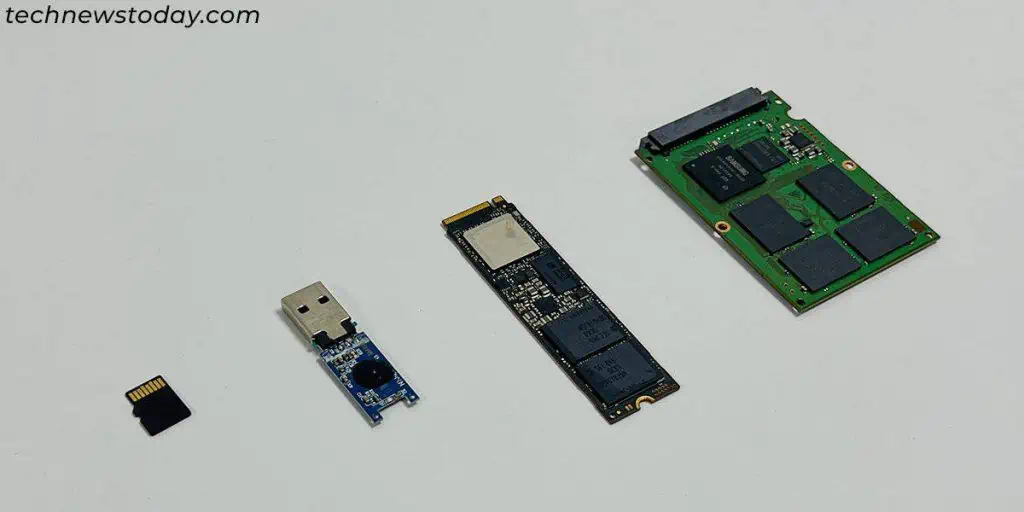In short,all SSDs are flash storage devices, but all flash storage devices are not SSDs.
SSD is a flash storage device that was designed to overcome the low endurance and performance of traditional hard disks. It has the highest performance and the largest capacity of any other flash storage media.
All flash storage mediause similar technologies, but you’ll find manydifferences between separate devices.

In this article, I’ll be focusing on exactly how SSDs measure up to other flash storage devices.
What is Flash Storage Technology?
Flash Storage is an electrically erasable and programmable memory technology designed for high-speed read/write operations.
It is a storage technology that uses nonvolatile memory cells (floating gate MOSFETs) to store the data.
Flash memory can be eitherNOR flashorNAND flash. NOR performs faster read operations while NAND is faster at erasing and writing data.
Flash memory is used in several storage devices, such as:
Thecommon storage and data transfer devicesuseNAND flashwhile configuration devices, like theBIOS chip, commonly useNOR flashmemory.
What is a Solid-state Device?
Solid-state drive (SSD) is a type ofNAND-based flash storage technology. By its name, it is clear that it has no physical moving parts and only works through the movement of electrons inside its memory cells.
While all flash storage devices work via the same principle, SSD’s name mainly exists as it wasdesigned to replace the traditional hard disksthat store data inside moving disks.
In addition to NAND flash chips,most SSDs also include DRAMwhich serves as a cache to speed up their performance.
While you’ll also find cheaper DRAM-less SSDs on the market, they have a lower lifespan and are much slower in comparison due to the higher use of NAND cells for writing.